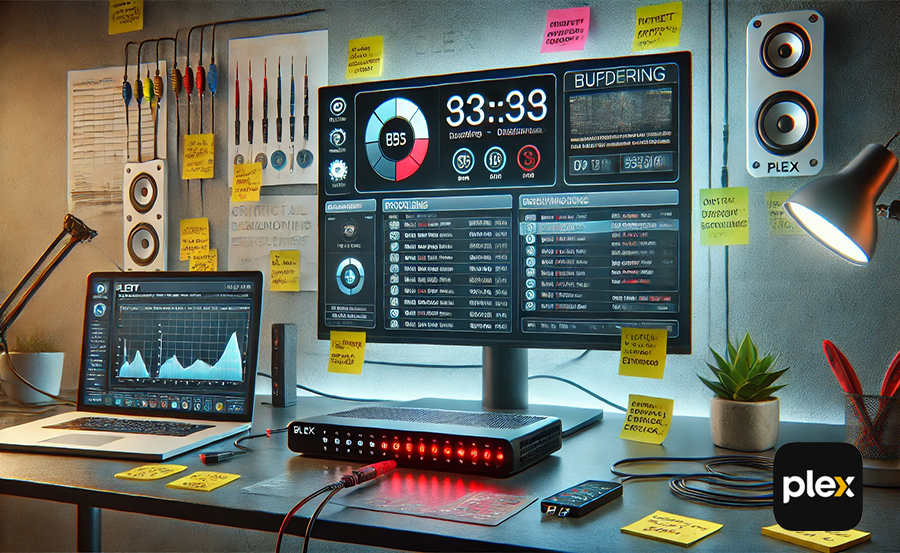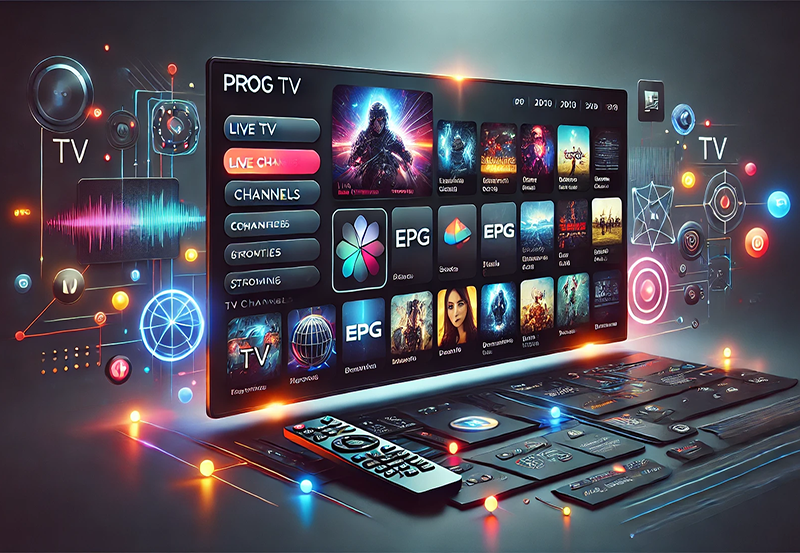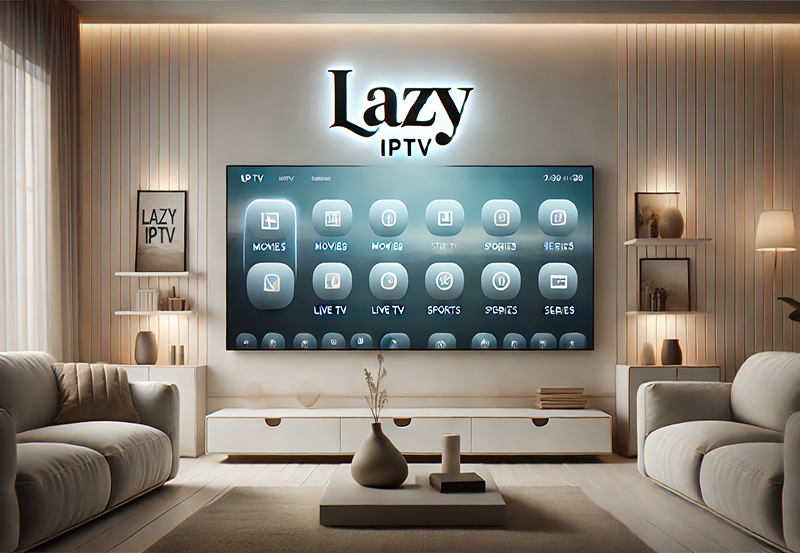In the bustling world of digital streaming, Plex IPTV stands as a revolutionary platform designed to transform how we experience television. Yet, despite its innovations, many users falter over technical errors that hinder a seamless viewing experience. Today, we’re diving into some of the most frequently overlooked technical mistakes on Plex IPTV and offering practical solutions to get things back on track. Whether you’re a novice or a seasoned streamer, understanding these pitfalls and how to fix them will amplify your IPTV enjoyment effortlessly.
Understanding Plex IPTV: A Brief Overview
Before tackling common issues, it’s crucial to understand what Plex IPTV is all about. Plex IPTV offers a unique way to stream your favorite content, providing access to a plethora of channels and making Top IPTV subscriptions attractive to a broad audience. Yet, its complex setup can sometimes bewilder even the tech-savvy users.
The platform lets you consolidate all media—a feature loved by cinephiles and series bingers alike. Known as one of the best IPTV for streaming movies, Plex allows users to build a personal library, access live TV, and more. However, its quality relies heavily on proper configuration.
Streaming Insight:
Discover premium entertainment with CalmaHub IPTV, offering top-tier channels and VOD at unbeatable prices.
Common Setup Errors and How to Avoid Them
Incorrect Server Configuration
One of the most prevalent issues among Plex users is incorrect server configuration. This can easily lead to failed connections or unsatisfactory streaming quality. A well-configured server ensures smooth operation, yet many overlook the importance of setting it up right.
To optimize your server setup, ensure your hardware meets the minimum requirements. This includes sufficient RAM and CPU power to handle multiple streaming sessions. Additionally, correct network settings are vital—port forwarding must be properly configured to allow external access.
Ignoring Network Optimization
Another oversight is ignoring network optimization. A stable internet connection is the backbone of any streaming service; without it, lags and buffering become frequent disruptions. To enhance your streaming quality, consider the following:
- Utilizing Ethernet connections instead of Wi-Fi whenever possible, as this reduces interference.
- Setting up quality of service (QoS) settings on your router to prioritize Plex traffic.
- Ensuring your internet bandwidth is sufficient for multiple devices.
By prioritizing your network’s performance, you avoid many common issues, providing a smoother viewing experience.
Overlooking Codec and Format Compatibility
Codec and format incompatibility can significantly affect your viewing experience, leading to files that won’t play or exhibit poor quality. Each media file must align with Plex’s supported formats to ensure playback without a hitch.
As a rule of thumb, stick to standard formats such as MP4 for video. Ensure you install all necessary codec packs and keep your Plex server updated to support new formats. This reduces lag and loading times, especially when dealing with larger files.
Troubleshooting Playback Issues
Adjusting Transcoding Settings
Playback issues often link to transcoding settings. If movies buffer frequently or refuse to play correctly, transcoding may be at fault. Plex allows you to modify these settings easily to improve performance.
Access the Plex server settings, and navigate to the transcoder menu. Here, you can adjust the quality settings to suit your network capacity. Lowering the quality can help if your bandwidth is limited, whereas a higher setting may benefit those with robust networks.
Correcting Subtitles and Sync Problems
Subtitle syncing issues are a common frustration for users who enjoy foreign films or require closed captions. These glitches usually arise from mismatched versions of media files and subtitle files.
To fix subtitle syncing problems, ensure both file types are perfectly aligned. Also, using Plex’s built-in subtitle options can alleviate many issues. Subtitles play a crucial role in the viewer experience, so proper handling enhances viewer satisfaction significantly.
Maintaining Optimal Performance: Tips and Tricks
Regular Updates and Maintenance
Keeping your Plex server updated is paramount in avoiding technical mishaps. Updates usually contain bug fixes and enhancements that improve functionality. Yet, consistent updates are frequently neglected due to presumed inconvenience.
Schedule periodic checks and automatic updates to ensure your Plex environment remains current. Regular maintenance tasks such as clearing cache and assessing log files help prevent common pitfalls.
Backing Up and Securing Your Content
Backing up your content protects against data loss, while securing it safeguards against unauthorized access. Despite its importance, many users assume it unnecessary until it’s too late. Regularly create backups of your media library and store them on an external drive or cloud service to avoid future grief.
Implement comprehensive security measures to protect your server. Password protection, VPNs for remote access, and securing your network prevent unwanted intrusions. These practices ensure your high-quality viewing experience remains uninterrupted and secure.
Ensuring Compatibility Across Devices
Configuring for Wide Device Access
Plex IPTV prides itself on being device-agnostic, offering a unified experience regardless of hardware. However, device-specific compatibility often causes confusion and streaming disruptions.
To maintain smooth streaming, ensure your device extenstions or apps are up-to-date. This involves checking for the latest software iterations and drivers both on the server machine and the client device. An added tip is checking the device’s ability to handle high-resolution formats without undue strain.
Testing and Troubleshooting on Mobile Devices
In our mobile-driven world, accessing Plex on smartphones or tablets should be seamless. However, mobile devices have their quirks and troubleshooting them poses unique challenges.
Ensure the Plex app is the latest version to prevent compatibility problems. Verify settings like transcoding options tailored to mobile, not meant to mimic the optimal settings of a more powerful computer or TV setup. Testing on both Android and Apple devices to distinguish device-specific issues from app-based ones is advisable.
Leveraging Community Support for Solutions
Tapping Into Online Forums
The robust Plex user community is a treasure trove of shared experience and knowledge. Contributing and engaging in these forums can guide solutions ranging from basic to complex issues.
Reddit, Plex official forums, and third-party blogs host discussions about common and rare technical issues. Typing specifics—like “frequent buffering issues on Plex”—into community searches yields experiential and tested solutions. Benefit from the advice of other users to answer specfic problems or general queries about the platform.
Utilizing Support Resources
Plex offers an in-depth knowledgebase and dedicated support for paid customers. Many users forget or bypass these resources, often underestimating their value. Surveys consistently rate the Plex help system as highly effective given its ease of use and depth.
From step-by-step troubleshooting guides to direct contact with support agents, leverage these resources when issues become overwhelming. By engaging with Plex’s support systems, solutions to even the trickiest issues are often just a query away.
A Final Note on Enhancing Your IPTV Experience
In the dynamic arena of IPTV, where content is plentiful and user expectations high, staying updated and informed is crucial. Addressing overlooked technical mistakes can profoundly improve your Plex IPTV experience. As streaming technology evolves, so too should your practice of upkeep and improvement, enriching your digital library’s potential.
Remember, these strategies are stepping stones to a more fulfilling and uninterrupted viewer experience. By investing a little time into understanding and addressing these common issues, you’re on the way to creating an IPTV setup tailored to meet your personal preferences and needs.
Frequently Asked Questions

What are the best Top IPTV subscriptions available?
Several IPTV services provide a variety of content tailored to user needs. The most acclaimed options often include customizable channel lists, international content, and device compatibility allowing users to enjoy extensive viewing pleasure.
How can I ensure the best IPTV for streaming movies?
To maximize your movie streaming experience, select an IPTV subscription that prioritizes high-definition content and stable server uptime. Additionally, keep your app or device optimized by maintaining updates and checking compatibility with the latest movie files.
What steps amplify IPTV enjoyment effortlessly?
Start by addressing network issues that might limit your streaming capabilities. Adjusting transcoding settings to suit your hardware and enhancing server performance through updates are sure ways to elevate the overall IPTV accessibly.
Can community forums help solve Plex issues effectively?
Absolutely! Plex forums and online communities host a wide array of user-driven solutions. They are especially helpful given the communal knowledge about updates, workarounds, and new configurations that can resolve both day-to-day and complex streaming issues.
Is it safe to use Plex for my IPTV needs?
Plex is widely accepted as a secure platform when configured correctly. Always update your software, utilize security measures like VPNs, and be cautious about unauthorized third-party plugins to prevent any potential security threats.
How often should I back up my Plex media library?
Backups should be performed regularly, especially if you frequently add new content. Weekly backups are advisable, but significant changes in your media library might merit more frequent updates to prevent data loss effectively.
5 Reasons Why a MAG Box Device is Essential for Home Entertainment





